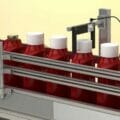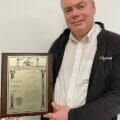Bearings may be ubiquitous, but these simple mechanical components are integral to some of the most exciting technological innovations taking place today. Here, Chris Johnson, managing director at ceramic bearings specialist, SMB Bearings explores three unexpected applications of ceramic bearings.
Humans have been using ceramics for domestic and industrial applications since around 25,000 BC. The material is hard, resistant to wear, chemically and thermally stable and an electrical insulator, so manufacturers can use this material for a wide range of applications. Ceramic bearings, for example, might be more expensive than steel, but provide reduced friction, reduced weight and have the potential to last much longer than the traditional stainless-steel offering, particularly in many harsh environments.
So, what are some of the unexpected applications that can benefit from ceramic bearings?
Space exploration
Excessive temperatures and speed during launch, ever-changing temperatures and radiation in orbit and its vacuum means that there is no tougher environment than space. As a result, manufacturers must take care when choosing bearings and lubricants — any minor faults will be amplified by the force of a launch.
Full ceramic bearings can run constantly at speed without lubrication, so they perform well in a vacuum. When you add their low temperature capabilities, they become the ideal candidate for satellites and other projects such as the Mars Exploration Rover, especially as Mars can face temperatures as low as 125 degrees Celsius.
Elite racing
Ceramic bearings are best suited to environments that are too hostile for steel bearings, such as environments with extreme temperatures, corrosive chemicals or liquids. In marine environments, ceramic bearings can provide excellent resistance to salt water while still delivering high speed and acceleration capabilities. When developing a boat for rowing races, for example, ceramic bearings can cope with higher loads and performance will not be compromised by the sea water.
Rowers aren’t the only racing teams that can benefit from ceramic bearings to enhance their performance. Pro-cyclists often choose good quality hybrid bearings — steel rings with ceramic balls — over full ceramic bearings. The combination of steel rings that can be machined to close tolerances and lightweight, high grade ceramic balls results in low rolling resistance. In cycling, hybrid bearings can cope with the high speeds of racing while delivering low rolling resistance, meaning that hybrid bearings require less effort to spin the wheels, conserving energy.
Medical
Medical technology is advancing at an exponential rate — doctors can produce bespoke implants based on patient scans, carry out surgery with robots and use technologies to remotely diagnose patients. Manufacturers must meet strict regulations when developing devices for the medical and pharmaceutical sectors to prevent contamination, so they must take care to choose the correct bearing for the application.
Some medical and surgical devices must withstand harsh chemicals during the sterilisation process. Steel bearings can become susceptible to corrosion in this harsh environment, so hard-wearing ceramic bearings are often a better choice to extend the lifespan of the device. Ceramic bearings are equally suited to cleanrooms, as they do not require lubrication to run, reducing the risk of contamination.
While ceramic bearings are harder than steel, offer higher dimensional stability and are resistant to corrosion and heat, they are significantly more expensive than their steel counterparts. As a result, ceramic bearings are better suited to high value applications such as lab equipment, that must meet exact requirements every time it is used. Using the wrong components in lab equipment can increase the risk of contamination, putting the entire study at risk.
Ceramics is one of the oldest industries — we’ve been using the material for thousands of years. As we design new ceramic materials that offer benefits including high performance to corrosion resistance, we can create ceramic bearings that can operate in a range of environments, from the ocean to other planets.
For more information about ceramic bearings and their benefits, visit www.smbbearings.com/products





